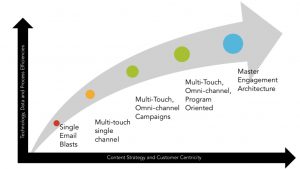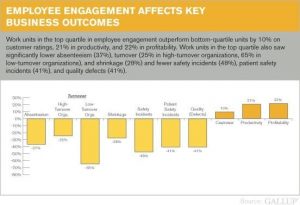— November 21, 2017

iStock
Most companies understand the benefits of leadership training and development programs. In fact, in a recent survey of more than 500 executives, 27 percent of those who said their company was “currently winning in the market” attributed that success to great leadership, while another 25 percent credited powerful and distinct capabilities.
Unfortunately, the knowledge that leadership development is crucial to success doesn’t prevent these programs from being axed when budgets are tight.
CEOs want hard facts upon which to base the efficacy (and likewise, the value) of a leadership training and development program. They want quantifiable proof that success is directly related to training and not to some change in the internal or external environment such as a new product release, changes in technology or an improved economy.
Demonstrating the connection between participating in training and development initiatives and an improvement in leader behavior or department performance requires creative information gathering by HR or talent managers, but it’s not impossible.
One of the most credible and widely used systems for measuring the ROI of leadership development is called the Kirkpatrick/Phillips Model, which consists of four levels:
- Reaction: How the trainee responds to the program
- Knowledge: Assessing the trainee’s new knowledge and acquired skills
- Behavior: Trainees, supervisors and direct reports assess the trainee’s leadership skills
- Impact and ROI: Trainees, supervisors and direct reports assess improvements in productivity
Based on this model and our own experience in this area, here are some guidelines we recommend for measuring the impact of leadership development programs.
Conduct A Pre- and Post-Training Assessment
Ask trainees to complete a knowledge test before and soon after the training and compare results to determine what they’ve learned.
Additional follow-up leadership evaluation programs can be conducted six months to a year after training to determine how well the trainee has retained the information. In addition to true and false or multiple choice questions, the trainee could be asked to answer questions that test situational judgment.
You can also use assessment tools like tests, role-playing, skill practices or simulations to grade trainees on new knowledge and skill acquisition. We offer a wide range of these assessments in addition to the leadership development programs we’ve fine-tuned over more than two decades.
Collect 360 Feedback
Post-training assessment does not have to be limited to what you can measure from trainees. One of the most telling ways to measure the effectiveness of leadership training is to seek feedback from others who work with the trainees, including their supervisors.
HR managers should gather information about the trainee from supervisors and direct reports to determine what behaviors have changed and how new behaviors are being applied to key areas that impact the company’s bottom line. This can be done through online questionnaires or in-person interviews.
To derive a numerical value, HR managers can collect an aggregate score from each participant regarding a single question dealing with overall effectiveness. Or, if you complete evaluations annually, compare post-training evaluations with evaluations from years past to identify improvements.
Gathering this feedback takes the post-training assessment a step further, offering even more substantial data. If possible, have a control group of people who take post-training assessments but have not attended the program. This might be a group of people who are next in line for training at your organization.
Evaluate Leadership Execution
Here, you determine to what extent new leadership skills and knowledge are impacting business. First, your team needs to identify performance measures that could be impacted by leader behavior, as well as the competencies or skills for which you are training. Determine what you want to measure and look at benchmarks.
For instance, what was the rate of employee turnover over the past five years? Has it increased or decreased? Have sales numbers increased? Is there an improvement with customer satisfaction?
The goal is to identify tangible indications that operations are improving.
You can apply the same principle to leadership competencies. How many leaders in this group improved their scores in a particular area, such as communication or decision-making? This will help you determine how well the training program is achieving the objectives.
Appraise Retention
On average, it costs four times as much to recruit and hire a new leader than it does to retain one. HR managers should also take into account how many trainees have remained with the company after a set period of time. Assess the total dollar value of those personnel costs, including benefits, and multiply those costs depending on the level of the employee. What is the total cost of recruiting, onboarding and training a replacement for that employee?
The Employment Policy Foundation estimates the cost of recruiting and training a new employee is about one fourth of the current employee’s total salary and benefits. The costs rise substantially depending on the level of the employee. For executives, the cost can be as high as 2,000 percent. You can use this number to determine how much the company has saved in costs otherwise spent recruiting and training new hires.
Assess Succession
Lastly, HR managers should track how many trainees were eventually promoted to a leadership position. Some companies look at the rate of promotion from high-potential programs compared to the rate of promotion of those who did not participate in the program., You can also consider the strength of the company’s reserve talent. In other words, how many promising internal candidates exist per key position?
Having a strong succession management program in place is key to developing an engaged workforce and safeguarding against high turnover.
Business & Finance Articles on Business 2 Community
(51)







